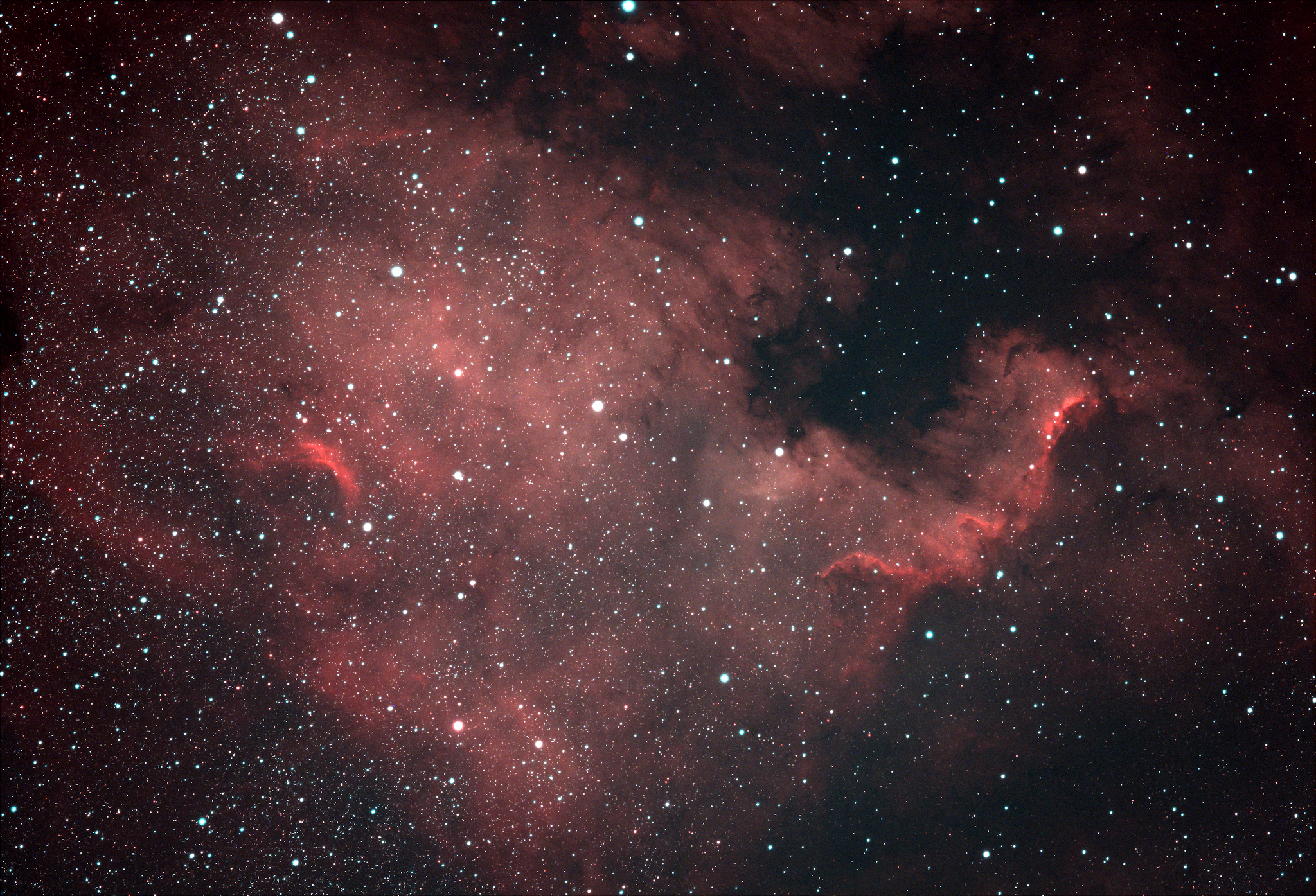North America Nebula
Welcome to Ecliptic Voyage!
Here is my rough capture of the wonderful and very iconic emission nebula, NGC 7000, also known as the North America Nebula. I did fudge the opportunity to capture the entire essence of the 'continent' in the frame (sorry Mexico). At the time, I had not realized how much of the continent was to be recognized in this giant cloud of hydrogen gas.
This target was first cataloged in the New General Catalog in 1821 by William Herschel's son, John Herschel. In 1890, astrophotographer Max Wolf had coined the name North America Nebula, after recognizing the continental shape that was revealed in long exposure photographs (details that are not recognizable with the naked eye).
So why is this image so red?
The red hue in this gaseous formation is due to ionized hydrogen gas emitting at the Hα (hydrogen-alpha) emission line. I used a dual band-pass filter which only passes wavelengths of light that are known to be emitted by emission nebulae. This helps cut out any light from light pollution in my area as well as suppresses the brightness of the surrounding stars so they are not saturating the image when trying to bring out the detail of the nebula itself.
I'm still new to the hobby and the image here could use a lot of work. However, for a first shot of this nebula I am happy with the results.
Here is my rough capture of the wonderful and very iconic emission nebula, NGC 7000, also known as the North America Nebula. I did fudge the opportunity to capture the entire essence of the 'continent' in the frame (sorry Mexico). At the time, I had not realized how much of the continent was to be recognized in this giant cloud of hydrogen gas.
This target was first cataloged in the New General Catalog in 1821 by William Herschel's son, John Herschel. In 1890, astrophotographer Max Wolf had coined the name North America Nebula, after recognizing the continental shape that was revealed in long exposure photographs (details that are not recognizable with the naked eye).
So why is this image so red?
The red hue in this gaseous formation is due to ionized hydrogen gas emitting at the Hα (hydrogen-alpha) emission line. I used a dual band-pass filter which only passes wavelengths of light that are known to be emitted by emission nebulae. This helps cut out any light from light pollution in my area as well as suppresses the brightness of the surrounding stars so they are not saturating the image when trying to bring out the detail of the nebula itself.
I'm still new to the hobby and the image here could use a lot of work. However, for a first shot of this nebula I am happy with the results.

Comments
Post a Comment